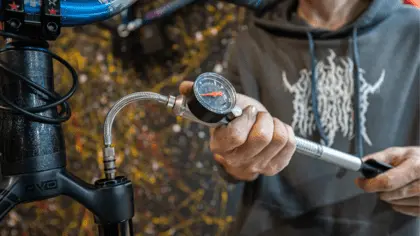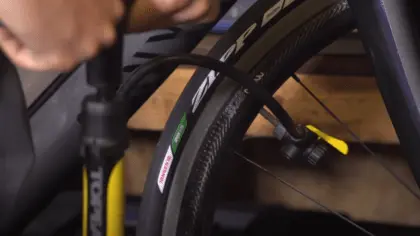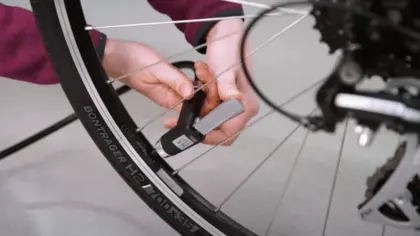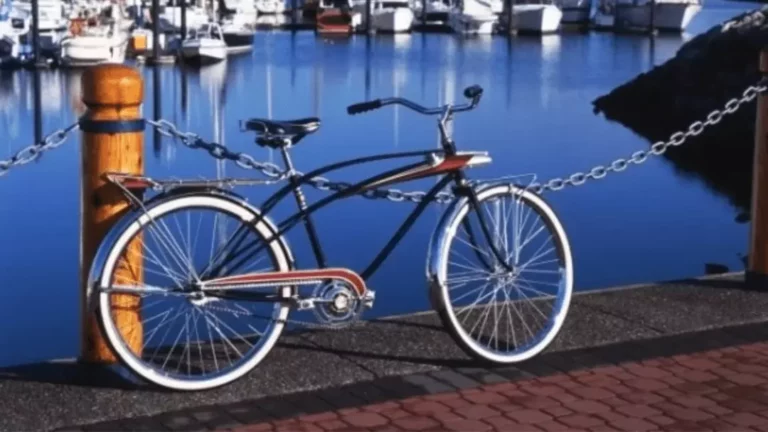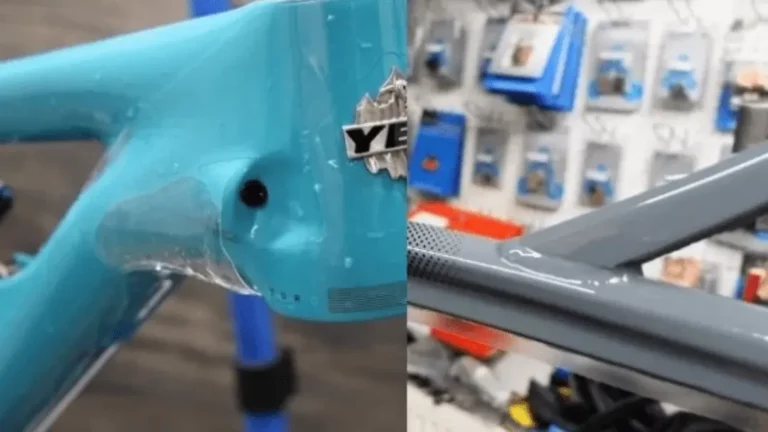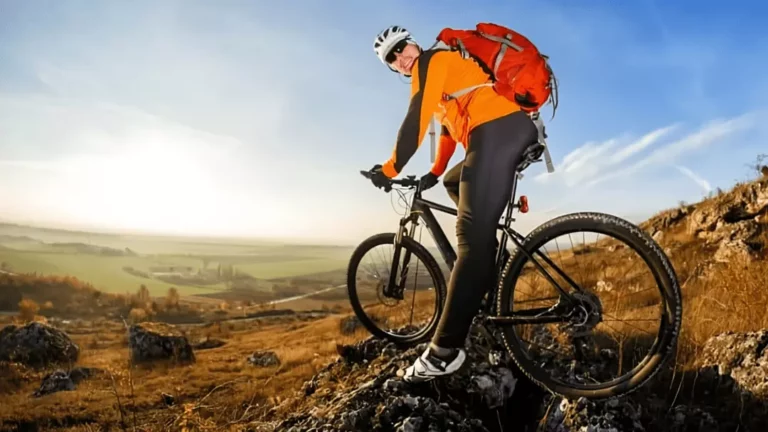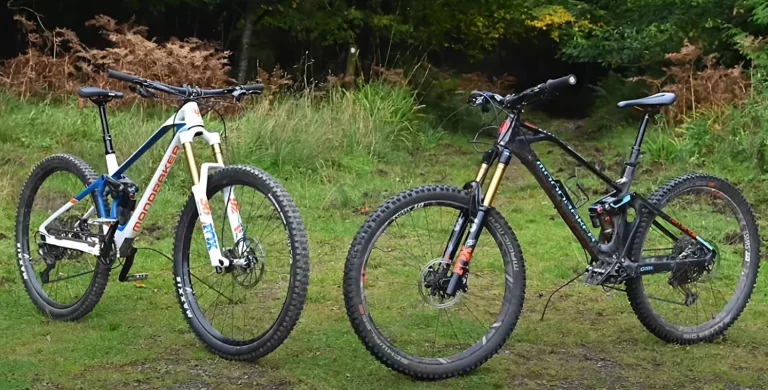How To Use A Bike Pump in 4 steps
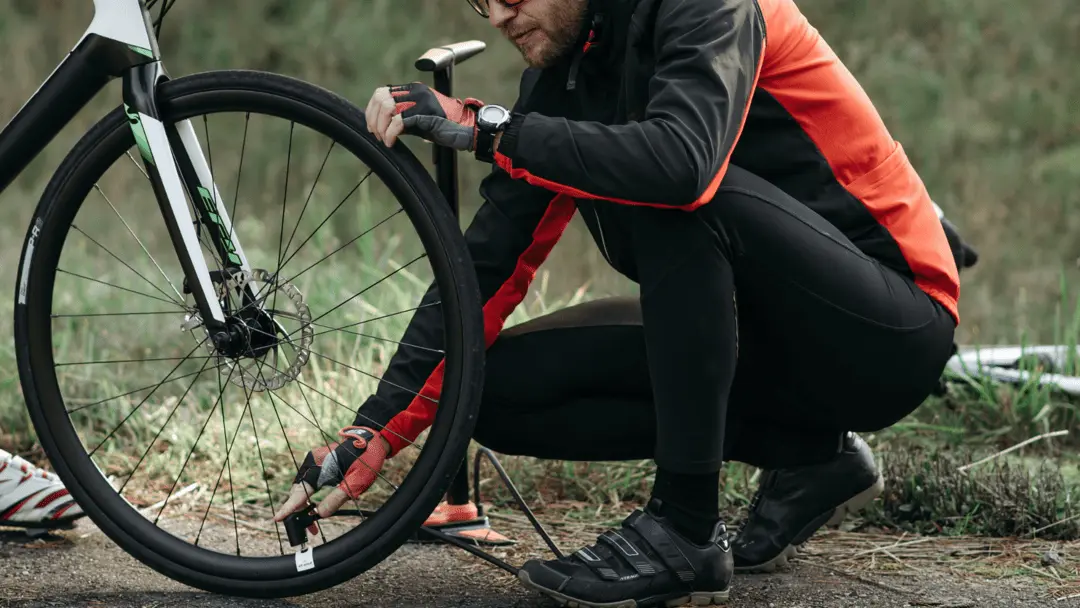
Do you know how to use a bike pump?
Before every ride, always check your tires. Check that you have appropriately inflated them and are free of damage to ensure a safe and trouble-free journey.
This post discusses the different types of valves, bike pumps, and, importantly, how to use a bike pump to inflate your tires.
Why Do You Need To Inflate Your Bike Tires?
Properly inflated pneumatic tires provide a smooth biking experience. The air in the tires acts as a shock absorber and allows the tire to grip the terrain providing easy movement.
Most bike tires comprise an airtight inner tube that fits inside the tire. Also, they have a valve for pumping in the air. On the other hand, tubeless tires form an airtight seal with the wheel rim and are commonly used in mountain bikes.
Related Article: Bike tire won’t inflate
Reasons Behind a Flat Tire
A flat tire may result from a puncture or an overused tire. Old inner tubes are more prone to leakage than new ones. You can repair damaged inner tubes with patches. Additionally, always maintain the optimum air pressure in the tires to enhance their longevity.
See Also: Bike tire keeps going flat but no puncture
Types Of Bike Pumps
Schrader and Presta are the two basic valve types present in the market today. Schrader valves are mainly used in children’s and hybrid bikes, whereas Presta valves are for on-road and off-road bikes. If you have both valves, it would be best to choose a pump that fits on both.
- Floor pumps
A floor or stand pump is a popular and easy-to-use tire inflator and can be used for Schrader and Presta valves. - Mini pumps
These are portable and used for long journeys. - CO2 inflators
CO2 inflator pumps contain Co2 cartridges. They have compressed carbon dioxide gas. Among the other type of pumps, C02 inflators weigh the least. Also, they inflate the tire instantly and are highly portable.
How To Use A Bike Pump
Learning the correct strategy for pumping up your bike tires is fairly straightforward. The steps are as follows:
1. Choosing the right pump
A little research can help you to choose the right pump from any local store. Take reviews from users as well. The more investment you make in a pump, the better its performance in terms of inflation speed, accuracy in psi (pounds per square inch) reading, and longevity.
2. Estimation of optimum tire pressure
Psi – or pounds per square inch – determines the optimum air pressure that a tire requires to run at maximum efficiency.
The ideal tire pressure will depend on the size of the tire, its width, and your weight and preference.
For example, a road tire typically needs 70-120 psi, whereas a mountain bike will range from 25-50 psi, and hybrids 40-70 psi. You can find the figure of the recommended psi on the tire wall. Again, it’s vital to check this figure before inflating your tires.
See Also: Can I put mountain bike tires on a hybrid
3. Fit the pump properly
Attach the nozzle of the pump to the valve. Pumps have switches that move up and down to lock the nozzle in position, ensuring all the pumped air gets into the valve and don’t leak. Adjust the pump nozzle if there is any leakage.
4. Inflate the tire
To pump in air, use your core muscles and upper body—almost like a mini workout for you. Once enough air has been pumped, pull out the nozzle, tighten the nut, and replace the valve cap.
Frequently Asked Questions
1. Why doesn’t my bike pump work?
A broken nozzle or a damaged valve can stop the pump from pushing in the air. First, consult a mechanic or expert to diagnose the problem. Then, if it is related to faulty equipment, get it replaced or repaired.
2. How is a pump lever used?
Force the base of the pump with your feet, pull out the lever pump, and push it downwards. The air gets pumped in the process.
Summary
Only in very rare cases are bicycle tires 100 percent airtight. This is a result of the delicate pores on the surface of the tube that slowly leak out the stored air. Knowing how to use a bike pump means you can inflate your tires correctly, consequently saving time and money.
This is an essential bike maintenance task that every cyclist needs to know.
Also, over-inflating can be harmful to your tires, causing the bike to bounce or become weak over long periods. In extreme circumstances, it can even cause the bike tire to explode. Nonetheless, with practice, you will understand how much tire pressure your bike needs.

Steve Beck is a passionate cyclist and experienced writer covering the cycling industry for over a decade. He has a wealth of knowledge and expertise in all bike-related things, from the latest products and technologies to the best routes and trails. His articles are well-researched, informative, and engaging, and he has a talent for explaining complex cycling concepts in a way that is easy to understand. Steve can be found on the road when he’s not writing about bikes, putting his knowledge and skills to the test.

